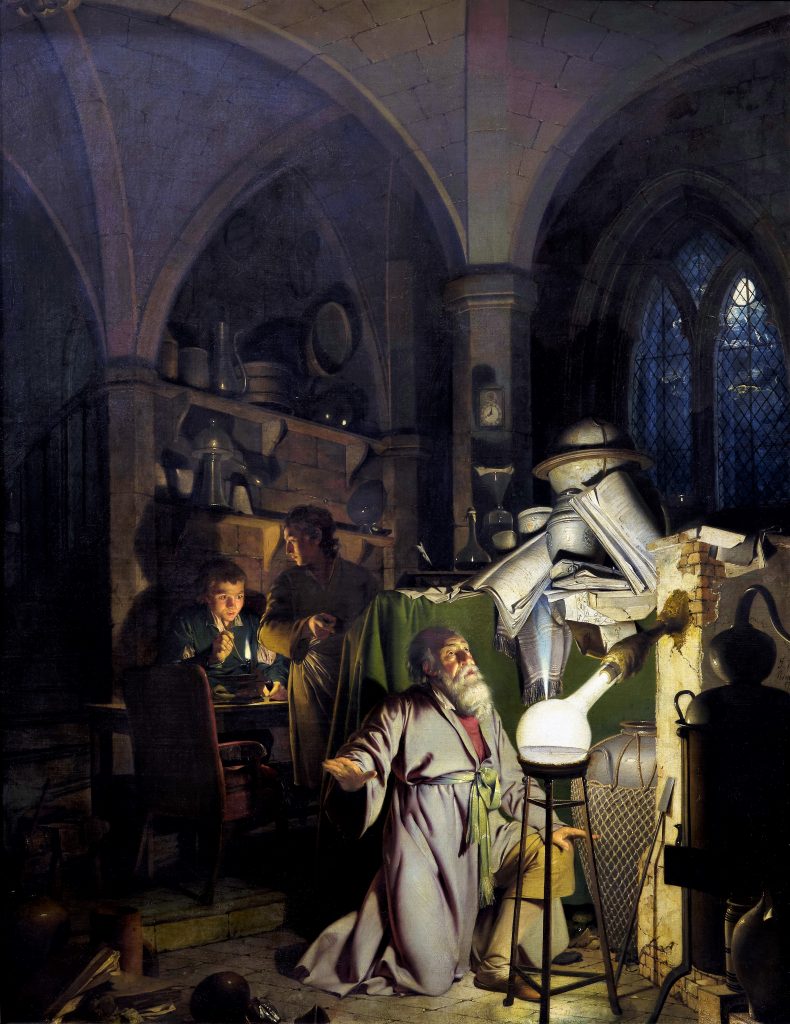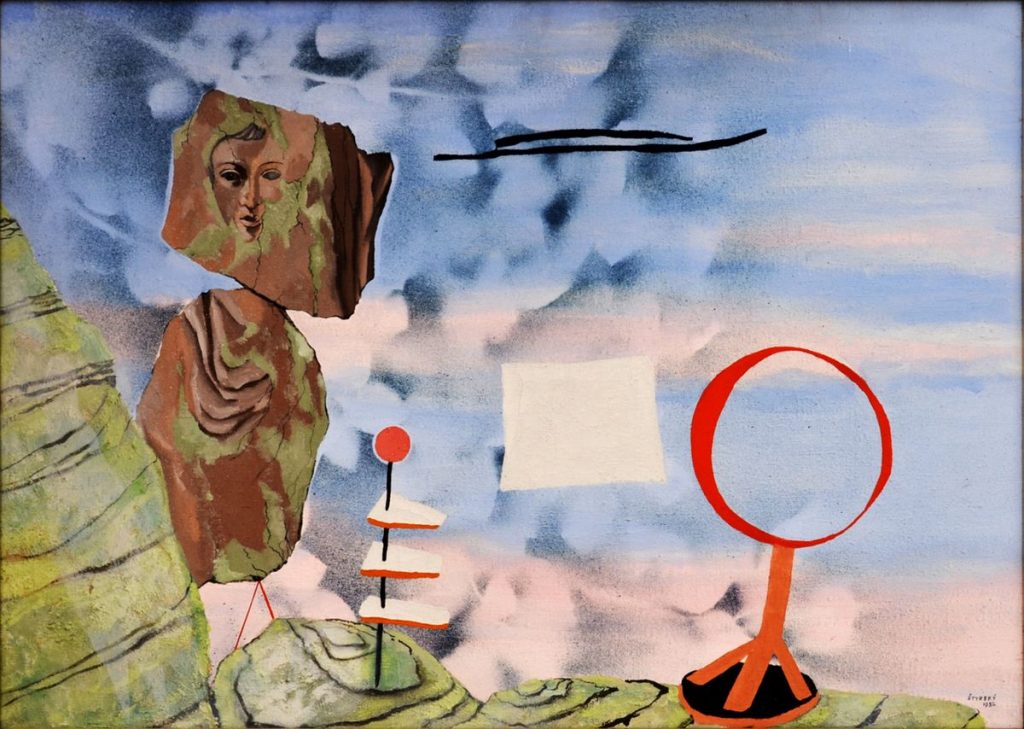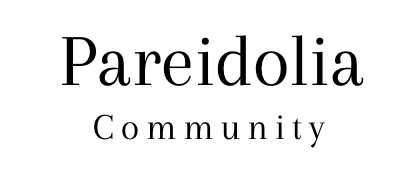Eliphas Levi (Alphonse Louis Constant (1810-1875), a French occultist, writer, and ceremonial magician described The Philosopher’s Stone as “the gateway to the mysteries of the universe, the key to unlocking the secrets of creation.”
For alchemists, it was an illustrious substance that was sought in the Middle Ages and Renaissance, and it might seem that those guys wanted to obtain it because of purely commercial reasons: the thing was said to be able to transform ordinary cheap metals into real gold. Another quality was the ability to bring a gift of eternal youth – also quite highly commercially promising stuff. But there was also a metaphorical meaning of the search for the Philosopher’s Stone – it was understood as a process of spiritual growth, dramatic eternal transformation and mighty enlightenment as a result (well, it’s something which also can be sold as a “course” or coaching sessions now. Oh well…). Anyway, alchemists were different people and, I guess, they had different motives for the search for the Philosopher’s Stone – from purely profitable to complex and spiritual – same as today! In Joan Rawling’s Harry Potter series, “Harry Potter and the Philosopher’s Stone” the main theme also is the pursuit of immortality and the temptation of power that comes with it.

For many the attainment of this stone represented the highest level of spiritual and material perfection, it was a symbol of the human soul itself – indestructible and immortal, the source of all knowledge and power. Isaac Newton described the Philosopher’s Stone as “the key to the Great Work of alchemy, which is the transformation of the self and the attainment of spiritual perfection”.

What is the connection to surrealism anyway? Well, surrealists same like alchemists also wanted to get the miraculous transformative thing to transmute the ordinary everyday perceptions of consciousness into the gold of art.
One of the surrealist fliers from the 1920-s suggested: “You with lead in the head, melt it down to make surrealist gold”. The connection between surrealism and alchemy lies in their shared interest in the transformation of the human being and in the hidden depths of the psyche. Surrealist artists tried to get to the Philosopher’s Stone through art, while alchemists – through special transmutation processes. And if for the alchemists was very important to use their intellectual power, their conscious mind at a maximum, for surrealists, it was quite the opposite – it was critical to “switch off” the super-ego – the intellectual inner critic, to access subconscious depths of the psyche.

Contrary to alchemists who described the invisible mysterious world they tried to access in terms of mythology and esoteric, an official founder of the surrealists’ movement André Breton gave a logical basis to the connection with this world: he highlighted the importance of the dreams and hypnotic states as a source of artist’s inspiration. He described the mind, the subconscious and the perception as “a man cut in two by the window”. The hidden world was not shown to us by spirits, but by our subconsciousness, hence a metaphorical language of the art was supposed to be liberated from the mystical vocabulary of illusory beliefs in deities, spirits, angels, demons etc.
Breton highlighted the importance of dreams and the hypnagogic state. In his Manifesto of Surrealism, he wrote that “we must give thanks to the discoveries of Sigmund Freud. On the basis of these discoveries, a current of opinion is finally forming by means of which the human explorer will be able to carry his investigation much further, authorized as he will henceforth be not to confine himself solely to the most summary realities”.
Breton himself was a trained psychiatrist and Freud’s ideas about the unconscious inspired him.
But despite initially Breton’s psychology-based approach, the idea that there is something more than science can describe was not dead among surrealists, hence some of them had connections to the world of the esoteric and/or the occult. For example, Remedios Varo, Leonora Carrington and Yves Tanguy were interested in Hermeticism, Salvador Dali and Andre Breton himself were fascinated by the tarot, Max Ernst and Antonin Artaud were interested in the mystics of Gnosticism, Carrington’s also was a practising magician and was a member of a secret society known as the Order of the Silver Star (The A∴A∴ – Argenteum Astrum, a secret order founded by occultist Aleister Crowley), Dali also was influenced by the work of the Spanish mystic Miguel de Unamuno, Dorothea Tanning was connected to the Theosophical Society, and the teachings of Gurdjieff and Ouspensky, Victor Brauner was drawn to the Kabbalah, same as Ithell Colquhoun, plus she herself also was connected to the Golden Down, her book “The Sword of Wisdom” studied alchemical symbols, she created her own tarot, Remedios Varo also was influenced by Helena Blavatsky‘s ideas.
All these teachings and traditions were essentially intertwined with alchemy as alchemy had a significant influence on the development of Western occultism and Western esotericism and mystical traditions as a whole.

Well, not only artists but Sigmund Freud himself was influenced by alchemists’ search for the Philosopher’s Stone and saw it as a metaphorical description of the human quest for self-development and self-knowledge. The process of psychoanalysis reminded the alchemical process. In this connection interesting to note that in Tarot, the archetype of the Self is represented by the World Arcana which is a unity of everything and in alchemy, the archetype of the Self is represented in the form of the Philosopher’s Stone or the alchemical Androgyne – i.e. a connection of two halves, two oppositions of one whole.
One of the key principles of alchemy was the belief in the unity of all things, and the idea that everything in the universe was connected and could be transformed by the manipulation of the four basic elements of nature – earth, air, fire, and water. So the Philosopher’s Stone basically was considered the quintessence, or the fifth element (I am sure many would remember Luc Besson’s film where Milla Jovovich was supposed to illustrate the fifth missing link.
By the way as a source of earth alchemists saw a faecal matter, or “dung”, and they paid attention to it believing that it contained a hidden essence or life force and could be transformed through various processes of purification and distillation into – yes, again! – into the Philosopher’s Stone.
Sigmund Freud, who influenced surrealists so much, also had a particular interest in faecal matters as he believed that they held important symbolic significance in psychosexual development. So there is no surprise that the use of faecal matter also had its place in surrealist art. Here the champion was of course Salvador Dali, who not only painted “dung” quite a few times, for example – in his 1929 painting “The Great Masturbator” or in his sculpture “Rainy Taxi”, but also wrote about this subject quite extensively in the alchemical context – about it’s ability to be transmuted into the highest forms of art. Antonin Artaud used faecal matter as a symbol of the body’s ability to transgress boundaries and break down societal norms.

Not only Freud with his theories influenced surrealists, but Jung too. Surrealists’ work also helped to popularize Karl Jung‘s views, and of course, Jung also was interested in alchemy, he saw the alchemical process as a metaphor for a journey through the different stages of psychological development, so it was a common theme, quite an important theme for many artists and psychologists.
This connection was identified by the surrealists themselves. For example, Remedios Varo constantly deliberately used alchemical imagery in her paintings, such as in “Creation of the Birds.” Jindrich Štyrský wrote poetry and prose that drew on alchemical themes, for example in his poem “The Black Sun” he described the alchemical process of the nigredo, he also translated different alchemical texts into Czech.
Leonor Fini stated: “Alchemy is a fantastic philosophy, and for me, it has always been a way of approaching the world. It speaks of transformation, the transmutation of metals, and of life itself. These things interest me greatly, and I use them in my work as a way of expressing my own personal philosophy.”
Andre Breton wrote about the similarities between the goals of “surrealist efforts and those of the alchemists. The philosophers’ stone is nothing more or less than that which was to enable man’s imagination to take stunning revenge on all things, which brings us once again, after centuries of the mind’s domestication and insane resignation, to the attempt to liberate once and for all the imagination by the “long, immense, reasoned derangement of the senses” and all the rest”.

Many artists used alchemical themes in their art before surrealists, for example – Hieronymus Bosch, Pieter Brueghel the Elder, and later Jan Steen and David Teniers the Younger. Russian avant-garde painters also incorporated alchemical symbols in their works, for example – Wassily Kandinsky, Mikhail Larionov, Olga Rozanova, and Kazimir Malevich. Yet it was, I think, an interest in including alchemy connected imaginary, but not the usage of the similar processes and ideas which were practised by many surrealists in the pursuit of their own version of the hidden in subconscious, freed from restrictive societal norms and cliché, liberated from the tunnel vision – a golden authentic artistic expression was surrealists Philosophical Stone – a pure gold freed from impurities, transformed and shiny.

